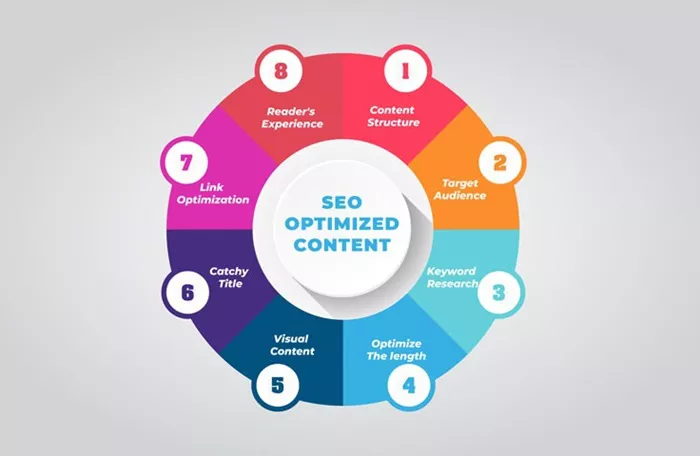Creating content that resonates with your audience while improving your website’s visibility on search engines is a fundamental goal for businesses and individuals alike. This process is achieved through SEO (Search Engine Optimization) optimized content, which strategically aligns your content with search engine algorithms and user intent. Let’s explore what SEO optimized content is, why it matters, and how you can craft it effectively.
Understanding SEO Optimized Content
SEO optimized content refers to any type of digital content created to rank highly on search engine results pages (SERPs). This content is strategically developed to target specific keywords, answer user queries, and deliver a seamless experience. It combines high-quality information with structural and technical optimization to ensure visibility and relevance to both users and search engines.
Key Elements of SEO Optimized Content
To create impactful SEO optimized content, several critical elements must be addressed:
1. Keyword Research and Usage
What It Involves: Identifying the search terms your target audience uses when looking for information, products, or services.
Why It Matters: Keywords guide search engines to understand the topic and context of your content, aligning it with user intent.
Best Practices:
Use primary and secondary keywords naturally within headings, subheadings, and body text.
Avoid keyword stuffing, which can result in penalties.
2. High-Quality and Relevant Content
What It Involves: Providing value by addressing the audience’s pain points, answering their questions, or solving their problems.
Why It Matters: Search engines prioritize content that engages users and meets their expectations.
Best Practices:
Create unique, detailed, and well-researched articles.
Ensure content is accurate, up-to-date, and aligned with current trends.
3. Content Structure and Readability
What It Involves: Organizing content in a way that is easy to navigate and digest.
Why It Matters: A clear structure enhances user experience and helps search engines crawl your content effectively.
Best Practices:
Use descriptive headings and subheadings.
Break text into short paragraphs and bullet points.
Incorporate visuals, such as images and infographics, to complement text.
4. On-Page SEO Factors
What It Involves: Optimizing individual web pages to improve their search rankings.
Why It Matters: On-page SEO ensures that every element of the content is optimized for both users and search engines.
Best Practices:
Include meta titles and descriptions with target keywords.
Use proper header tags (H1, H2, H3).
Add descriptive alt text for images.
5. Mobile Optimization
What It Involves: Ensuring your content is accessible and user-friendly on mobile devices.
Why It Matters: With mobile traffic surpassing desktop traffic, search engines like Google prioritize mobile-friendly content.
Best Practices:
Use responsive design.
Test content across multiple devices for usability.
Benefits of SEO Optimized Content
SEO optimized content delivers numerous advantages:
1. Increased Organic Traffic
Well-optimized content attracts more visitors by appearing in the top results of search engines.
2. Enhanced User Experience
SEO practices, such as clear structure and mobile optimization, improve navigation and readability, benefiting users.
3. Higher Conversion Rates
Targeting user intent with relevant content boosts engagement, leading to better conversions.
4. Long-Term Results
Unlike paid ads, SEO content provides lasting visibility, generating consistent traffic over time.
Steps to Create SEO Optimized Content
1. Define Your Goals and Audience
Set clear objectives: Are you aiming to inform, sell, or entertain?
Understand your audience: Identify their preferences, search behavior, and challenges.
2. Perform Comprehensive Keyword Research
Use tools like Google Keyword Planner, SEMrush, or Ahrefs.
Focus on a mix of short-tail and long-tail keywords.
3. Develop a Content Plan
Outline topics, subtopics, and supporting details.
Map keywords to specific content sections.
4. Write Quality Content
Begin with a compelling introduction.
Use natural language and active voice.
Provide actionable insights and examples.
5. Optimize for Search Engines
Include keywords strategically in titles, meta descriptions, and throughout the text.
Use internal and external links to enhance credibility.
6. Format for Readability
Use headings, lists, and visuals to break up large blocks of text.
Ensure a logical flow of ideas.
7. Test and Update Regularly
Monitor performance through tools like Google Analytics.
Refresh outdated content to maintain relevance.
Common Mistakes to Avoid
1. Ignoring Search Intent
Crafting content that doesn’t align with what users are searching for can harm rankings and engagement.
2. Overlooking Mobile Users
Failure to optimize for mobile devices leads to poor user experience and lower rankings.
3. Excessive Keyword Focus
Overusing keywords makes content unnatural and risks search engine penalties.
4. Lack of Visual Appeal
Text-heavy content without images or videos can lose reader interest.
5. Failing to Analyze Performance
Skipping analytics leaves you unaware of what’s working and what needs improvement.
How SEO Optimized Content Impacts Businesses
For businesses, SEO optimized content is a critical driver of growth:
Small Businesses: Build brand awareness and compete with larger players.
E-Commerce Sites: Increase product visibility and boost sales.
Blogs: Attract a dedicated audience and monetize traffic.
Conclusion
SEO optimized content is the cornerstone of digital success. It combines creativity, strategic thinking, and technical optimization to meet the needs of both users and search engines. By focusing on quality, relevance, and structure, you can create content that not only ranks high but also provides real value to your audience. Adopting these practices ensures long-term benefits, from increased visibility and traffic to enhanced credibility and conversions.
Related Topics

